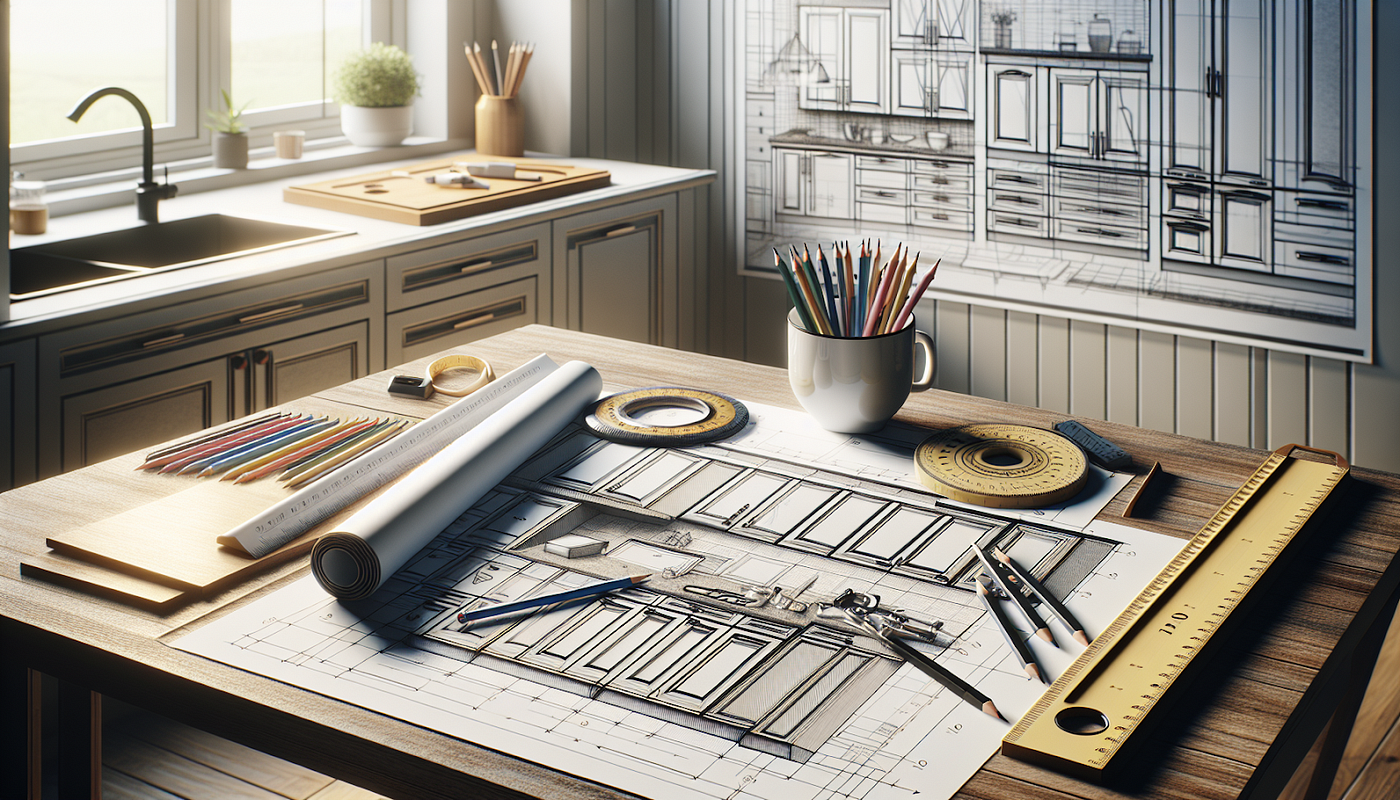Millwork installation is a critical aspect of interior finishing, involving the installation of woodwork and trim elements such as doors, windows, baseboards, crown moldings, and cabinetry.
Properly executed millwork can dramatically enhance the aesthetics and functionality of a space, adding a touch of craftsmanship and elegance. This comprehensive guide will cover the essential tools and techniques required for successful millwork installation, ensuring a high-quality finish that stands the test of time.
Introduction to Millwork
What is Millwork?
Millwork installation refers to the custom-made wood products produced in a mill, including moldings, trims, cabinetry, doors, and windows. These elements are designed to fit specific architectural styles and are used to enhance both the structural and aesthetic qualities of a building.
Importance of Quality Millwork
- Aesthetic Appeal: High-quality millwork adds elegance and sophistication to any space.
- Durability: Properly installed millwork can last for decades, providing both beauty and functionality.
- Value Addition: Well-executed millwork can significantly increase the resale value of a property.
Essential Tools for Millwork Installation
Hand Tools
- Measuring Tape: Accurate measurements are crucial for precise cuts and fits.
- Chisels: Essential for fine-tuning and shaping wood.
- Handsaw: Useful for making detailed cuts where power tools are impractical.
- Coping Saw: Ideal for cutting intricate shapes and curves.
- Hammer: For driving nails and securing trim pieces.
- Utility Knife: Useful for scoring and trimming materials.
Power Tools
- Miter Saw: For making precise angled cuts, especially for moldings and trims.
- Table Saw: Essential for cutting large sheets of wood and making long, straight cuts.
- Jigsaw: Perfect for cutting curves and intricate shapes.
- Nail Gun: Speeds up the process of securing trim pieces.
- Router: Used for shaping edges and creating decorative patterns.
- Drill/Driver: For making holes and driving screws.
Measuring and Layout Tools
- Square: Ensures corners are perfectly square.
- Level: Ensures surfaces are perfectly horizontal or vertical.
- Compass: For drawing circles and arcs.
- Marking Gauge: Helps in marking lines parallel to the wood’s edge.
Safety Equipment
- Safety Glasses: Protects eyes from dust and debris.
- Ear Protection: Essential when using loud power tools.
- Dust Mask: Prevents inhalation of fine wood particles.
- Gloves: Protects hands from splinters and cuts.
Preparation for Millwork Installation
Planning and Design
- Assess the Space: Measure the dimensions of the room and determine the placement of millwork elements.
- Select Materials: Choose the type of wood and finishes that match the design aesthetic and functional requirements.
- Create a Plan: Draw detailed plans and elevations to guide the installation process.
Acclimatizing Materials
- Why It’s Important: Wood can expand or contract with changes in temperature and humidity.
- How to Acclimatize: Store the wood in the installation space for at least 48 hours to allow it to adjust to the room’s environment.
Surface Preparation
- Clean Surfaces: Ensure walls and other surfaces are clean and free of dust.
- Repair Damages: Fix any holes, cracks, or imperfections in the walls.
- Prime and Paint: If necessary, prime and paint surfaces before installing millwork to ensure a clean, finished look.
Techniques for Successful Millwork Installation
Measuring and Cutting
- Accurate Measurements: Always measure twice and cut once to avoid mistakes.
- Use Templates: For intricate cuts, use templates to ensure precision.
- Proper Cutting Angles: When cutting moldings, ensure the angles are correct to fit snugly.
Joining Techniques
- Butt Joints: Simple joints where two pieces are butted together.
- Miter Joints: Angled joints used primarily for corners.
- Coping Joints: Used for fitting moldings together in corners.
- Dovetail Joints: Strong joints used in cabinetry for drawer construction.
Installation of Baseboards and Crown Molding
- Baseboards:
- Start at the longest wall and work around the room.
- Use a miter saw to cut inside and outside corners.
- Secure with nails or adhesive.
- Crown Molding:
- Use a coping saw for inside corners to ensure a tight fit.
- Use a miter saw for outside corners.
- Secure with nails into the studs.
Installing Doors and Windows
- Pre-Hung Doors:
- Ensure the door frame is level and plumb.
- Shim the frame to align it correctly.
- Secure the frame with screws.
- Window Casings:
- Measure and cut the casing to fit snugly around the window.
- Use a level to ensure the casing is straight.
- Secure with finishing nails.
Cabinet Installation
- Level the Base Cabinets: Use shims to ensure the base cabinets are level and plumb.
- Secure to Wall Studs: Attach cabinets to wall studs for stability.
- Install Wall Cabinets: Start with the upper cabinets, ensuring they are level and aligned with the base cabinets.
Finishing Touches
Sanding and Smoothing
- Smooth Surfaces: Sand all surfaces to ensure a smooth finish.
- Use Fine Grit Sandpaper: For the final sanding to prepare the wood for finishing.
Staining and Painting
- Staining: Apply stain to enhance the natural beauty of the wood.
- Use a brush or cloth to apply the stain.
- Wipe off excess stain with a clean cloth.
- Painting: Apply primer and paint for a polished look.
- Use a high-quality brush or roller for an even coat.
- Apply multiple coats for durability.
Sealing and Protecting
- Apply Sealant: Use a wood sealant to protect the millwork from moisture and wear.
- Use Varnish or Polyurethane: For added protection and a glossy finish.
Troubleshooting Common Issues
Gaps and Misalignments
- Use Caulk: Fill gaps with paintable caulk for a seamless finish.
- Adjust Shims: Realign misaligned pieces by adjusting shims.
Cracks and Splits
- Wood Filler: Use wood filler to repair small cracks and splits.
- Replace Damaged Pieces: For significant damage, replace the affected pieces.
Staining and Finishing Problems
- Uneven Stain: Sand the area and reapply the stain for an even finish.
- Bubbling Paint: Sand the bubbles and repaint the area.
Maintenance and Care
Regular Cleaning
- Dust Regularly: Use a soft cloth or duster to remove dust.
- Avoid Harsh Cleaners: Use mild soap and water for cleaning.
Periodic Inspection
- Check for Damage: Regularly inspect for any signs of damage or wear.
- Reapply Finish: Reapply finish or sealant as needed to maintain protection.
Environmental Control
- Maintain Humidity Levels: Use a humidifier or dehumidifier to maintain stable humidity levels.
- Avoid Direct Sunlight: Protect millwork from direct sunlight to prevent fading and warping.
Conclusion
Millwork installation is a craft that requires precision, patience, and the right set of tools and techniques. By following the guidelines outlined in this article, you can achieve professional-quality results that enhance the beauty and functionality of any space. Whether you are installing baseboards, crown molding, doors, windows, or cabinetry, the key to success lies in careful planning, accurate measurements, and meticulous execution. With proper care and maintenance, your millwork will remain a stunning feature in your home for years to come.
Stay in touch to get more updates & news on Web of Buzz !




